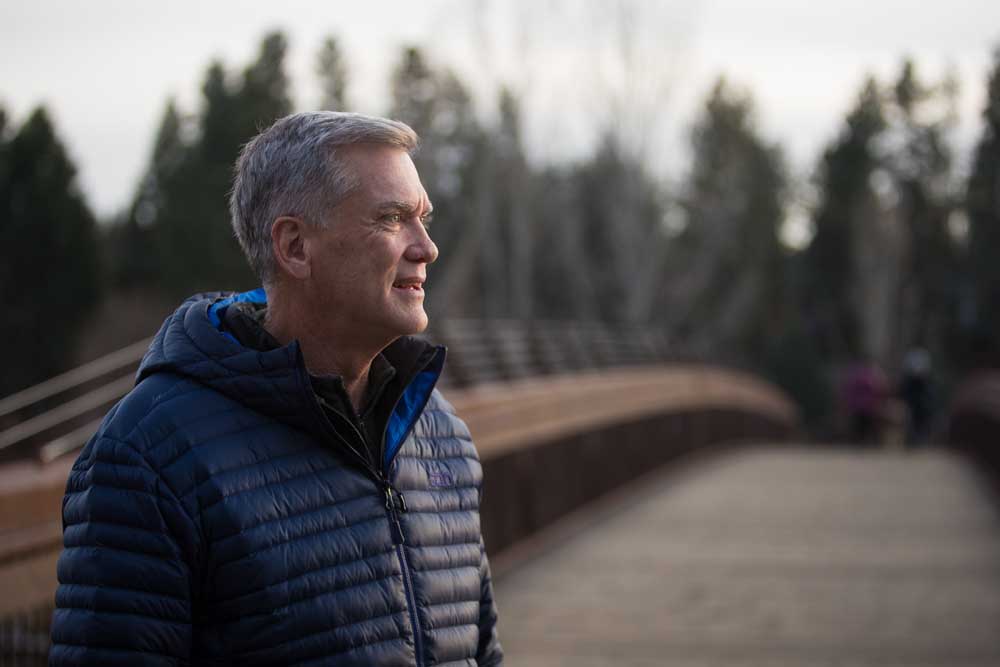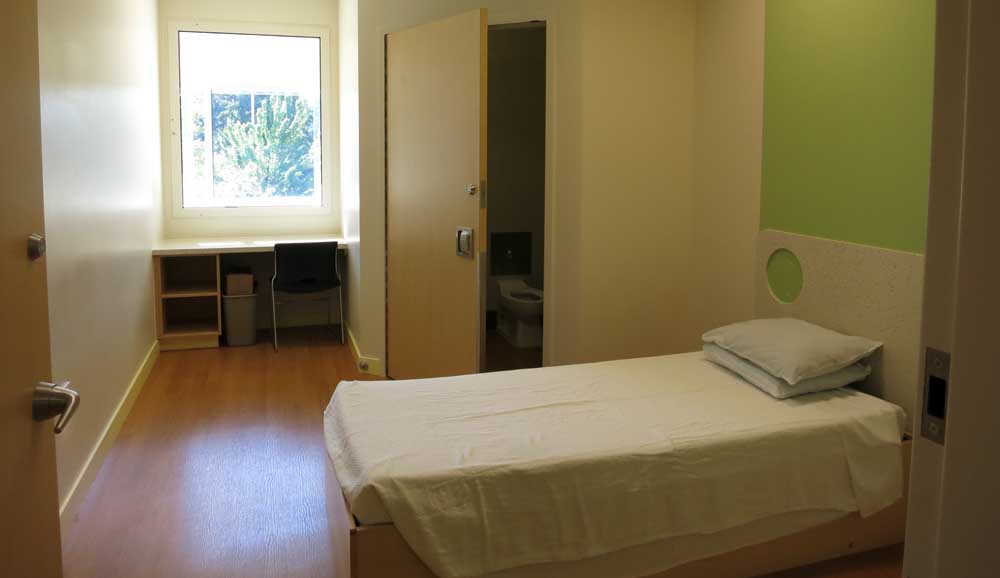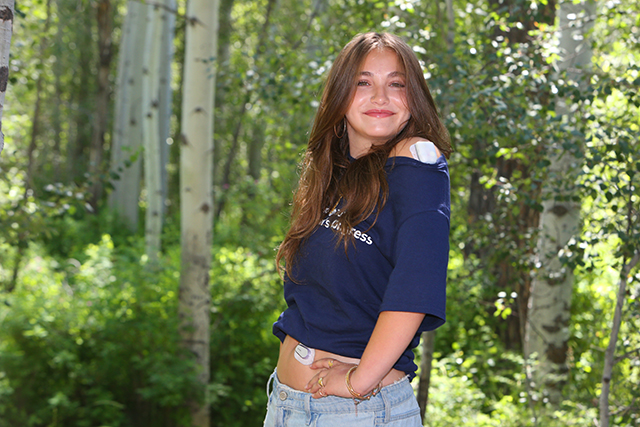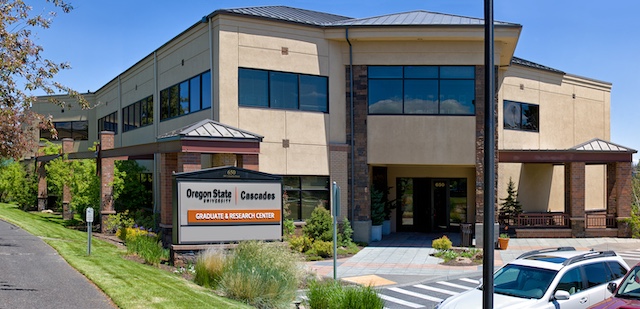Don Horton, Bend Park & Recreation District head for 21 years, to retire in 2024
Published 5:30 am Sunday, December 17, 2023

- Don Horton, executive director of Bend Park & Recreation District, stands near the footbridge over the Deschutes River in Bend on Friday. The footbridge, a park district project, was replaced in 2016. Horton, who is retiring from the district next October after 21 years, said adding public access points to the Deschutes River was among the highlights of all the projects completed during his tenure.
When Don Horton was 16, his dad asked him to take apart the engine inside his first car — a Pinto — and put it back together. When he wasn’t tinkering with things in the home he was outdoors, mostly roaming the woods near his family home in Texas.
Being comfortable in nature and engineering would serve Horton well later in life as he worked for cities and park districts in Texas. His love for the outdoors melded with technical know-how, helping him to find solutions for the communities in which he lived.
Trending
The culmination of Horton’s experiences can also be found in Bend, where Horton is the longtime executive director of the Bend Park committee & Recreation District. The district has seen an explosive development in parks, trails and recreation facilities since Horton began on Jan. 1, 2003. Larkspur Swim and Fitness Center, The Pavilion ice rink, Riley Nature Preserve, Alpenglow Park and Bend Whitewater Park are a few of the landmarks that have risen during his tenure as executive director. His role in getting behind the creation of the projects cannot be overstated.
“Don developed one of the outstanding park districts in the country,” said Ted Schoenborn, a former park district board member.
“The Bend park district is about the best governmental organization I have ever encountered.”
But just as his work on the Pinto engine eventually came to an end, Horton’s work in Bend is also winding down. The 62-year-old plans to retire in October 2024, bringing the curtain down on 21 years of service at the district.
“It’s a long time to be in one place,” said Horton, speaking from his second-floor office in the park district overlooking the Riverbend Park. “Once you’ve been somewhere that long you begin to feel like it’s your time and I feel like it’s time for someone else to do this job.”
Succession plans
Trending
Horton is recommending Michelle Healy, the current deputy executive director, to succeed him. The district’s board of directors still needs to approve the nomination. But whether it’s Healy or someone else, Horton says he plans to spend the next 10 months transitioning out of the role before retiring to New Mexico.
An internal hiring process was by no means how Horton came to the job.
At the time of his hiring, Horton was employed by the city of Allen, Texas, where he worked as a city administrator. The Bend Park & Recreation District was conducting a nationwide search for a new executive director and Horton applied for the job. The opportunity to come to Bend met a personal need to raise his young children close to nature.
“I had always wanted to be in a mountain state. When we flew out here for the first time to visit it felt like this was the place we wanted to be,” he said. “After we moved out, we discovered what a great place it is to raise kids.”
Once he had boots on the ground, Horton felt like the park district had a good foundation but just needed some new energy and direction. “The bones were already in place,” he said.
Some members of the community questioned why more parks were needed, given the close proximity of the Deschutes National Forest. But Horton wanted places that could be accessible to all members of the community any time of the day, reachable after school and work.
“Close to home has always been important to me as we built out the park system to serve every community,” he said. “We are not 100% there yet but we are making strides to get there.”
The early 2000s were a period of unprecedented growth in Bend. System Development Charges, also known as SDCs, were increasing, setting up the park district with a bulging war chest to use on projects.
“They needed to bring somebody in who already had a lot of development experience,” said Horton. “I was fortunate to be the one they chose to do that.”
Early in his tenure Horton saw a need to purchase property to grow the system of parks and trails. Riley Ranch was one such place. Alpenglow was another. Horton went after these properties, encouraging his staff and the board to acquire them and develop them for public access.
Horton also helped spearhead a general obligation bond that voters passed in 2012, raising $29 million for the district. The bond funded many of the projects Bendites enjoy today, including the Bend Whitewater Park and The Pavilion.
“Don just brought a very stable and very sophisticated process to the district and that is why we have all the parks and trails available to us,” said Schoenborn, former board member.
Motivating factors
Giving the community more opportunities to go outside for recreation were important, Horton said.
“We have a park system that helps change people’s lives for the better,” said Horton. “People have a chance to get out and recreate their bodies and their minds and parks become a place for people to meet one another and interact.”
He also recognized that world-class communities rely on their park systems.
“Building a really strong and robust park system has always been on my mind, but you have to have a community that supports that. Bend is a lifestyle community and it makes it easier when you have a community that supports a strong park system.
A personal goal has been to bring more parks and recreation opportunities to lower-income families. Horton has helped address this by developing a well-endowed scholarship program that distributes around $670,000 a year to individuals with financial needs, according to district data.
“I don’t know of any other community in the country that provides that kind of money for people to participate in programs,” said Horton. “For development stages of children, that is important that they have sports and recreation opportunities or arts or whatever their interest is.”
His work in Bend led to a lifetime achievement award, the David E. Clark Professional Award, given this year by the Oregon Recreation and Parks Association.
“He had left quite a legacy,” said Eric King, Bend’s city manager. “He always comes to the table as a true advocate for parks and open space.”
Preparing for the job
Horton’s father worked for the U.S. military as a physicist, building top-secret satellite communication networks for aircraft. When the family lived in Texas, Horton’s father purposely got them lost in the woods so they could enjoy the challenge of finding their way out.
“That kind of set my environmental ethics and drove what I ended up doing as an adult,” he said.
Horton’s desire to work on engineering projects was also inspired by his father.
“He was a physicist,” Horton said. “He knew how things worked. He was always doing stuff around the house and I was a part of that. So I learned a lot from my dad on how things were built and how you fix them and repair them.”
The Pinto he put together as a youth was a game changer, teaching Horton not only about cars but about science and engineering.
Then came college and a degree in parks administration. He spent summers working at a camp, trekking with kids into the wilderness.
Horton was park superintendent for the city of Waco and then got a job as parks and recreation director for the city of Allen, a fast-growing suburb of Dallas. There the city manager asked him to build the new City Hall. He was chosen over the engineering department “because the city manager did not want a square box,” said Horton.
He went on to build the city’s police department headquarters, the library, fire department, parks among other buildings.
“I did all that in six years. That is how I got the job here. I think the (park district) board recognized that we were about to go through a big growth spurt.”
Horton says his experiences in Waco and Allen got him ready for work in Bend.
“Of course, you don’t know that when they are happening, but I think it was preparing me for the job I have here,” said Horton. “I am really fortunate to have been here for 21 years and to help build this system out.”
Horton has been well compensated for his efforts — he is the highest salaried public employee in Central Oregon with an annual salary of $228,732.
What does retirement look like
Horton said he is looking forward to his next stage in life, which begins with a move to New Mexico. He spent part of his youth in New Mexico, working summer jobs at a camp and building trails. He also has family there, including his adult daughter.
“We have a home there,” he said. “That’s a state I have loved all my life.”
Retirement will include travel some a few exotic destinations, said Horton. As an avid scuba diver, he dreams of exploring reefs in Australia, Belize, the Caribbean and Fiji. He dreams of diving with bull sharks. An African safari is also on the bucket list.
“Things you dream about but never have enough time to do,” he said.
He also plans to continue hiking and backpacking. Barbequing brisket and ribs will continue to be another pastime — almost mandated by his Texan roots. Return trips to Bend are also expected.
But he admits consultancy work may also fit into his retirement plans.
“I don’t feel like it’s time for me to stop working, it’s just time for me to try something else.”
Bend Park and Recreation District today employs around 600 people compared to the 200 people it employed when Horton joined in 2003.
The park district has added 32 new parks and 23 miles of trail under Horton’s leadership.
The district maintains and operates more than 3,035 acres of developed and undeveloped parkland, including 84 parks/open spaces and 75 miles of trail.
More than 1,000 recreation programs are available at its facilities. The district also hosts community events including the July 4th Pet Parade.
In 2006, the district received the National Gold Medal Award for excellence in Park and Recreation management (an award is given to the best park and recreation agency in the nation for its population category).
The district is not owned by the City of Bend, rather it is a special tax district. It is governed by a five-member, elected board of directors and managed by an executive director.








